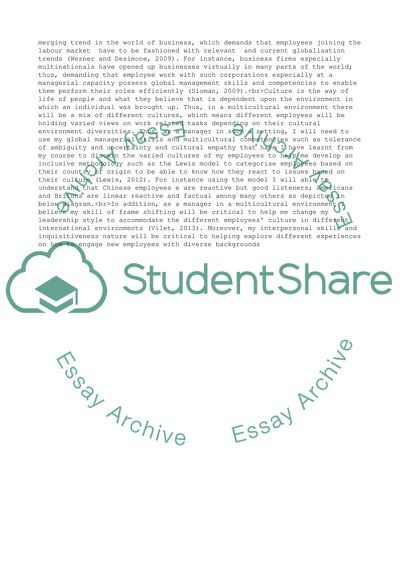Cite this document
(Management Competencies in a Multicultural Environment Essay Example | Topics and Well Written Essays - 2750 words, n.d.)
Management Competencies in a Multicultural Environment Essay Example | Topics and Well Written Essays - 2750 words. https://studentshare.org/management/1855792-international-management-competencies-self-evaluation-and-development-plan
Management Competencies in a Multicultural Environment Essay Example | Topics and Well Written Essays - 2750 words. https://studentshare.org/management/1855792-international-management-competencies-self-evaluation-and-development-plan
(Management Competencies in a Multicultural Environment Essay Example | Topics and Well Written Essays - 2750 Words)
Management Competencies in a Multicultural Environment Essay Example | Topics and Well Written Essays - 2750 Words. https://studentshare.org/management/1855792-international-management-competencies-self-evaluation-and-development-plan.
Management Competencies in a Multicultural Environment Essay Example | Topics and Well Written Essays - 2750 Words. https://studentshare.org/management/1855792-international-management-competencies-self-evaluation-and-development-plan.
“Management Competencies in a Multicultural Environment Essay Example | Topics and Well Written Essays - 2750 Words”. https://studentshare.org/management/1855792-international-management-competencies-self-evaluation-and-development-plan.


